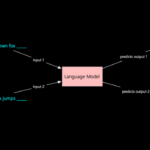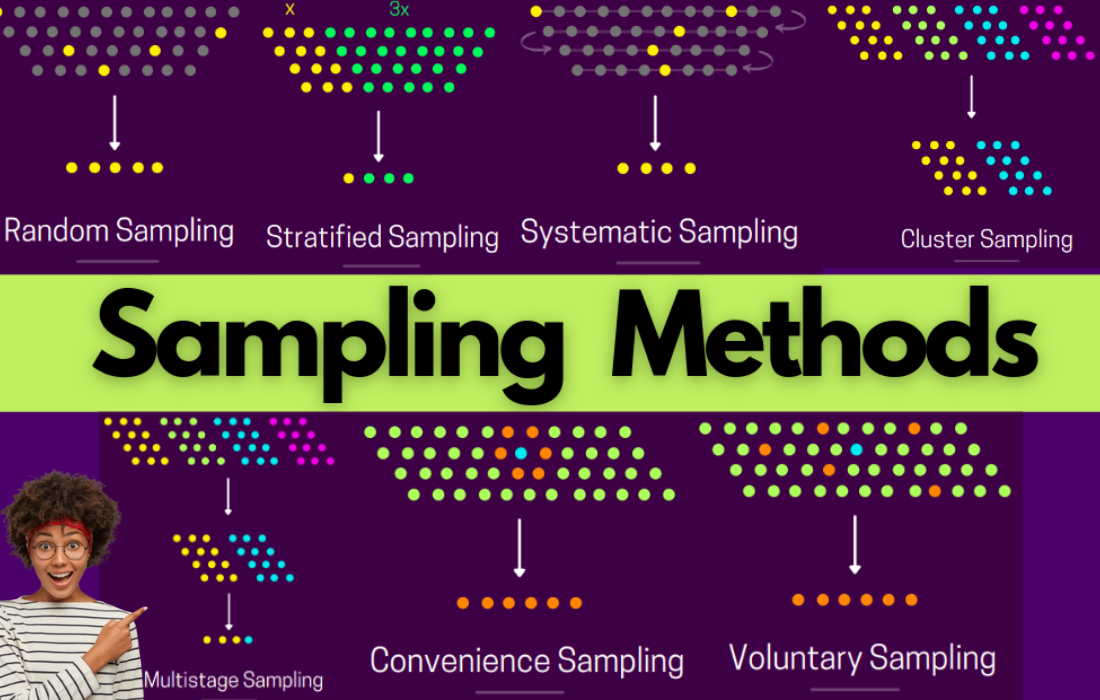What is Sampling?
Data sampling is a critical statistical analysis technique used in various fields to efficiently analyze and interpret large data sets. It involves selecting a representative subset of data points from a larger population or dataset. The goal is to identify patterns, trends, and insights that reflect the characteristics of the entire data set, without having to examine every individual data point. This approach makes it easier and quicker for data scientists, predictive modelers, and analysts to work with large data sets, especially when it’s impractical to analyze all available data.
In simpler terms, sampling is like taking a small bite from a big meal to determine how the whole meal tastes. Instead of analyzing the entire dataset, you select a small portion that will represent the entire group, making the analysis more manageable and less costly.
Why is Sampling Important?
Sampling plays a significant role in reducing the time, cost, and complexity involved in analyzing massive datasets. For instance, in big data analytics, sampling makes it possible to extract useful information from datasets that would otherwise be too large to handle efficiently. By using representative samples, analysts can derive insights that help in decision-making, pattern recognition, and predictive modeling.
However, there is a balance to be struck when selecting sample sizes. While larger samples may increase accuracy, they can also make the analysis slower and more cumbersome. On the other hand, smaller samples may provide valuable insights quickly but run the risk of sampling errors, where the sample may not fully reflect the population’s characteristics.
Different Types of Sampling Methods
Sampling techniques can be broadly classified into two categories: probability sampling and non-probability sampling. Let’s explore both categories in detail.
1. Probability Sampling Methods
In probability sampling, each data point or individual has a known, non-zero chance of being selected for the sample. This technique ensures randomness and reduces bias in sample selection.
a. Simple Random Sampling
- Definition: In simple random sampling, subjects are chosen at random, ensuring that each individual in the population has an equal chance of being selected.
- Example: Using software tools to randomly pick individuals from a population for a survey.
b. Stratified Sampling
- Definition: The population is divided into subgroups (strata) based on a shared characteristic, and then samples are taken from each subgroup randomly.
- Example: If you were analyzing a survey of a classroom with students of different ages, you could divide the students into age groups and randomly sample from each group.
- Key Point: The sample must be proportional to the population sizes within each subgroup to ensure fairness.
c. Cluster Sampling
- Definition: The population is divided into clusters, and then entire clusters are randomly selected to be included in the sample.
- Example: If a company is conducting market research, they might randomly select entire neighborhoods (clusters) for data collection instead of individual people.
- Key Point: This method is useful when the population is geographically spread out, and individual sampling would be too costly.
d. Multistage Sampling
- Definition: This method involves several stages of sampling. First, the population is divided into clusters. Then, clusters are further divided, and samples are taken at each stage.
- Example: If you are conducting a nationwide survey, you might first select a few regions (first stage), then choose specific towns within those regions (second stage), and finally select individuals from those towns (third stage).
- Key Point: It is useful for large-scale surveys, allowing for sampling in multiple stages to reduce cost.
e. Systematic Sampling
- Definition: Systematic sampling involves selecting every nth individual from the population list.
- Example: If you have a list of 1,000 students, and you want a sample of 100, you would select every 10th student on the list.
- Key Point: This method is simpler but can be biased if there’s a hidden pattern in the population list.
2. Non-Probability Sampling Methods
Unlike probability sampling, non-probability sampling doesn’t guarantee that every individual has a known chance of being selected. As a result, it is more prone to bias but is often used when it’s impractical to conduct random sampling.
a. Convenience Sampling
- Definition: In convenience sampling, data is gathered from the easiest or most accessible sources.
- Example: A researcher may select survey participants from a class or a local area because they are readily available.
- Key Point: While convenient, this method can lead to biased samples that do not accurately represent the entire population.
b. Consecutive Sampling
- Definition: In consecutive sampling, every participant who meets certain criteria is selected until the sample size is reached.
- Example: In clinical trials, consecutive sampling might involve enrolling all eligible patients in a hospital over a certain period.
c. Purposive or Judgmental Sampling
- Definition: The researcher selects individuals based on their judgment and predefined criteria.
- Example: A marketing team might select individuals with specific purchasing behaviors to understand consumer trends.
- Key Point: This method is useful for in-depth studies where specific knowledge or expertise is needed.
d. Quota Sampling
- Definition: Researchers divide the population into subgroups and then select participants from each subgroup to meet a predetermined quota. Randomness is not involved in this process.
- Example: A researcher might decide to select 50 men and 50 women from a population of 200 to ensure equal representation.
- Key Point: Quota sampling ensures diversity but can be prone to bias since the selection within subgroups is not random.
Applications of Data Sampling
Sampling is extensively used in various fields such as market research, healthcare, social sciences, and business analytics. For instance, businesses can use sampling to identify customer behavior patterns, which in turn helps with predicting future trends and designing better sales strategies. Similarly, in healthcare, clinical trials often use sampling to study the effectiveness of new treatments or drugs on a smaller, manageable group before wider implementation.
Conclusion
Sampling is a powerful tool that helps analysts efficiently draw insights from large data sets. Whether it’s for big data analysis, survey research, or predictive modeling, the appropriate sampling method depends on the nature of the data and the research objectives. Understanding different sampling techniques allows data analysts to make better decisions, avoid biases, and ensure that the results are as representative and reliable as possible.
By carefully selecting the right sampling method, analysts can uncover valuable insights without the need to examine the entire population, ultimately saving time and resources while maintaining accuracy.
Random Sampling: A Basic Example
One of the most straightforward forms of probability sampling is Random Sampling, where every member of the population has an equal chance of being selected. This eliminates bias and ensures that the sample is representative.
Let’s say we have a population of 100 individuals, and we want to randomly select a sample of 10. With random sampling, every individual has the same probability of being selected. Here’s a simple Python implementation for random sampling:
|
1 2 3 4 5 6 7 8 9 10 11 12 13 |
import random population = 100 # The total population size data = range(population) # The entire population # Select a random sample of 10 from the population sample_size = 10 random_sample = random.sample(data, sample_size) print("Random Sample:", random_sample) |
In this code:
- We define a population size of 100 individuals.
- We use Python’s
random.sample()method to randomly pick 10 individuals from this population. - The sample is unbiased and represents a random subset of the population.
2. Non-Probability Sampling
Unlike probability sampling, Non-Probability Sampling does not rely on random selection, and not all members of the population have a chance of being included. This type of sampling is more subjective and often used in situations where random sampling is not feasible.
Non-probability sampling methods can be useful when the researcher wants to select specific individuals based on certain criteria or when there are time, cost, or logistical constraints that make random sampling difficult.
Some common types of non-probability sampling include:
- Convenience Sampling: This method involves selecting the easiest or most accessible individuals for the sample. It’s often used in situations where the researcher has limited access to the population.
- Judgmental or Purposive Sampling: Here, the researcher selects individuals based on their judgment and expertise. For example, a market researcher may focus on individuals who have made recent purchases.
- Quota Sampling: This method involves selecting individuals from each subgroup (based on specific characteristics) until a predetermined quota is met. While it ensures that certain groups are represented, it does not involve random selection.
- Snowball Sampling: Often used in social research, snowball sampling starts with a few initial participants, who then refer other participants, creating a “snowball” effect of sample collection.
Pros and Cons of Probability vs. Non-Probability Sampling
Advantages of Probability Sampling:
- Minimized Bias: Random selection reduces the chances of bias in the sample, leading to more generalizable results.
- More Accurate Inferences: It allows for statistical calculations like confidence intervals and margins of error.
- Clear Representation: It provides a more accurate representation of the population, increasing the reliability of the findings.
Disadvantages of Probability Sampling:
- Expensive: Can be costly and time-consuming due to the need for random selection and large sample sizes.
- Complex: Requires detailed knowledge of the population and the ability to randomly select from it.
Advantages of Non-Probability Sampling:
- Cost-Effective: It’s quicker and cheaper than probability sampling because random selection is not required.
- Flexibility: Allows researchers to target specific groups or individuals that are relevant to the study.
Disadvantages of Non-Probability Sampling:
- Bias Risk: Since selection is not random, the sample may be biased, leading to inaccurate or skewed results.
- Limited Generalizability: Non-probability samples may not be representative of the population, reducing the ability to generalize the findings.
Conclusion
Sampling is a crucial technique in statistical analysis, allowing researchers to draw conclusions about a large population without having to study every individual. Both Probability Sampling and Non-Probability Sampling have their place in research, depending on the objectives, resources, and constraints of the study.
Random Sampling, a subset of probability sampling, is one of the most common and effective ways to ensure a sample is representative and unbiased. While probability sampling methods provide more reliable results, non-probability sampling can be more practical when dealing with limited resources or specific target groups.
In any case, understanding the strengths and weaknesses of different sampling techniques will help you make better-informed decisions in your research or analysis, whether you are conducting a survey, analyzing customer behavior, or building predictive models.























